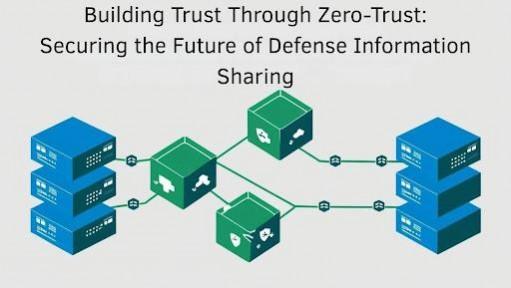
In a compelling analysis of next-generation cybersecurity strategies, Kiran Kumar Gunakala explores the transformative role of zero-trust architecture in defense and aerospace sectors. Drawing on extensive research and technical expertise, the article presents a strategic roadmap for enabling secure real-time information sharing in high-stakes environments.
Rethinking Cybersecurity: From Perimeter Defense to Zero Trust
Traditional perimeter-based security models are becoming obsolete as cyber threats increasingly exploit internal vulnerabilities and stolen credentials. Zero-trust architecture reverses this approach by enforcing continuous verification for every user and device, regardless of location. This model delivers measurable results, organizations adopting zero-trust report 42% fewer security incidents and substantial reductions in the costs associated with data breaches.
Layered Security: The Pillars of a Zero-Trust Framework
A robust zero-trust system is built on four foundational components: identity and access management, API security, data protection, and system integration. Together, they enforce the "never trust, always verify" principle. Instead of granting access based on network location, users must prove their identity repeatedly through multi-factor authentication and dynamic access controls. This minimizes lateral movement within networks and limits the scope of potential attacks. Furthermore, systems are micro-segmented, ensuring that breaches in one zone don't compromise the entire infrastructure.
Powering Real-Time Defense: Identity and API Management
Cloud-native platforms offer robust capabilities to implement zero-trust policies effectively. Advanced identity and access management tools provide role-based controls, just-in-time access, and continuous session authentication at scale. This has led to a 94.7% drop in unauthorized access attempts and rapid verification in defense settings. API security further enhances protection by using OAuth 2.0 and anomaly detection to block unauthorized machine-to-machine interactions while preserving seamless operational efficiency.
Shielding Data in Motion and at Rest
Data is the lifeblood of modern defense operations. Protecting it across borders, classifications, and disconnected systems is paramount. Encryption technologies supported by hardware security modules ensure data remains secure even in the most hostile digital environments. Real-world deployments have seen zero data exposure incidents over hundreds of terabytes and years of operational use. Automated data classification and audit logging provide traceability and compliance with regulations, significantly reducing reporting times and ensuring consistent policy enforcement.
Integration Without Compromise
Defense systems often operate with a mosaic of legacy and modern technologies, posing a unique integration challenge. Zero-trust doesn't require starting from scratch. Instead, it introduces adaptable connectors and protocol wrappers to bring older systems into compliance without disrupting ongoing operations. Integration tools can support protocols dating back decades, reducing implementation time by over 60% while maintaining fidelity and security. This hybrid approach allows organizations to modernize securely and gradually, reducing risks while transitioning critical infrastructure.
Operational Excellence in Disconnected Environments
One of zero-trust's greatest strengths is its resilience in disconnected or degraded communication environments. Tactical units often operate with limited connectivity, yet still require secure authentication and data access. Edge processing, time-limited local credentials, and secure synchronization protocols allow these systems to function autonomously and rejoin the network seamlessly. During extensive tests, systems retained over 90% of functionality during extended outages and synchronized securely within seconds upon reconnection.
Navigating the Challenges with Innovation
Implementing zero-trust in defense isn't without hurdles. Legacy system constraints, bandwidth limitations, and complex classification handling demand innovative mitigation strategies. Each challenge is addressed with precision, from caching and edge-based validation to machine learning for document classification. These methods reduce overhead, streamline authentication, and ensure mission-critical capabilities are preserved under any condition.
In conclusion, zero-trust architecture is essential for modern defense and aerospace operations, offering layered security, real-time responsiveness, and flexible integration. Kiran Kumar Gunakala's framework demonstrates how robust cybersecurity can enhance, not hinder, operational agility, transforming security from a reactive measure into a strategic advantage in contested digital environments.




![Limited edition Phone (3a) launched in India; what's special about it [read now] Limited edition Phone (3a) launched in India; what's special about it [read now]](https://data1.ibtimes.co.in/en/full/825642/limited-edition-phone-3a-launched-india-whats-special-about-it-read-now.png?w=220&h=135&l=50&t=40)





![Limited edition Phone (3a) launched in India; what's special about it [read now]](https://data1.ibtimes.co.in/en/full/825642/limited-edition-phone-3a-launched-india-whats-special-about-it-read-now.png?w=220&h=138)





![Limited edition Phone (3a) launched in India; what's special about it [read now]](https://data1.ibtimes.co.in/en/full/825642/limited-edition-phone-3a-launched-india-whats-special-about-it-read-now.png?w=220&h=135)
